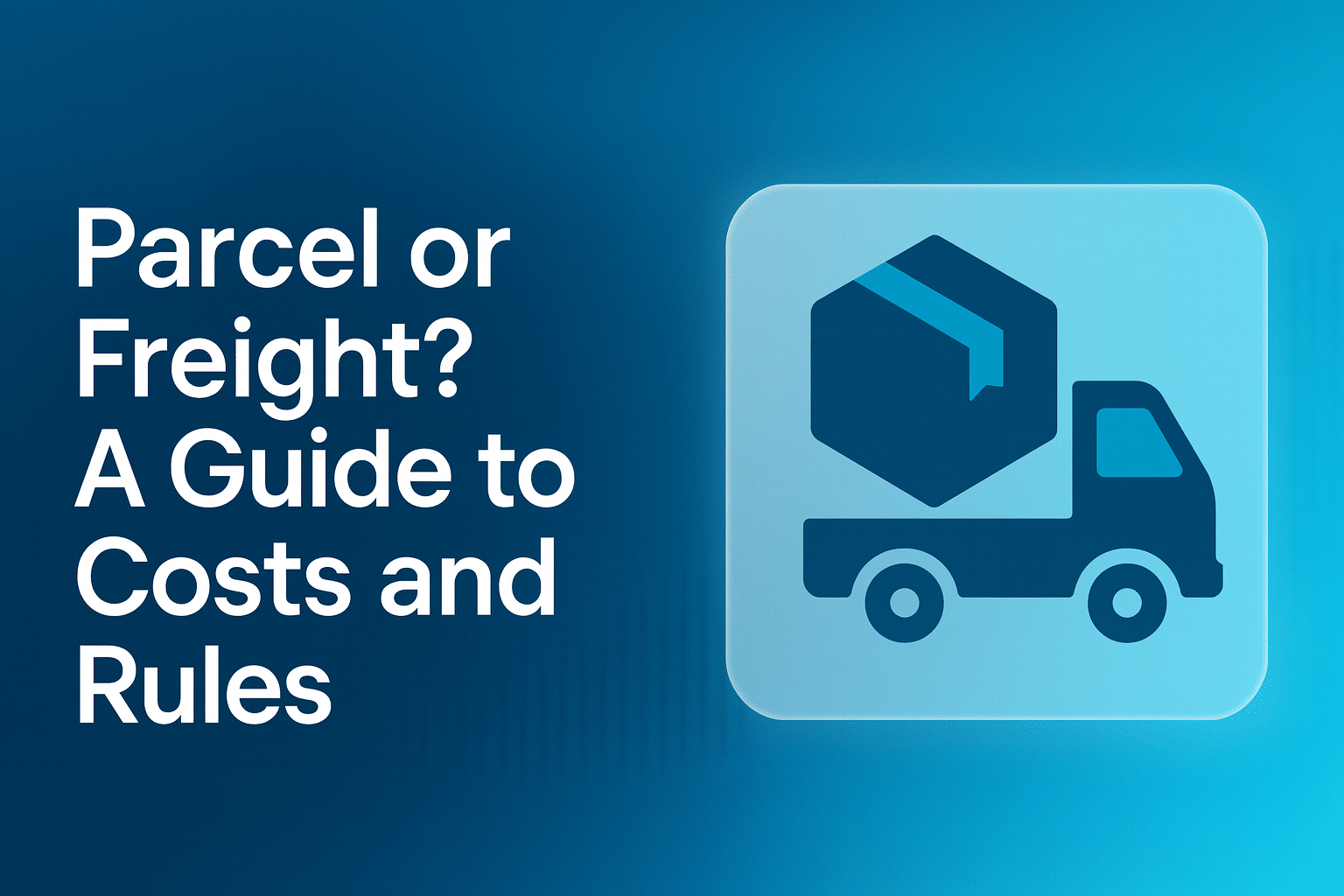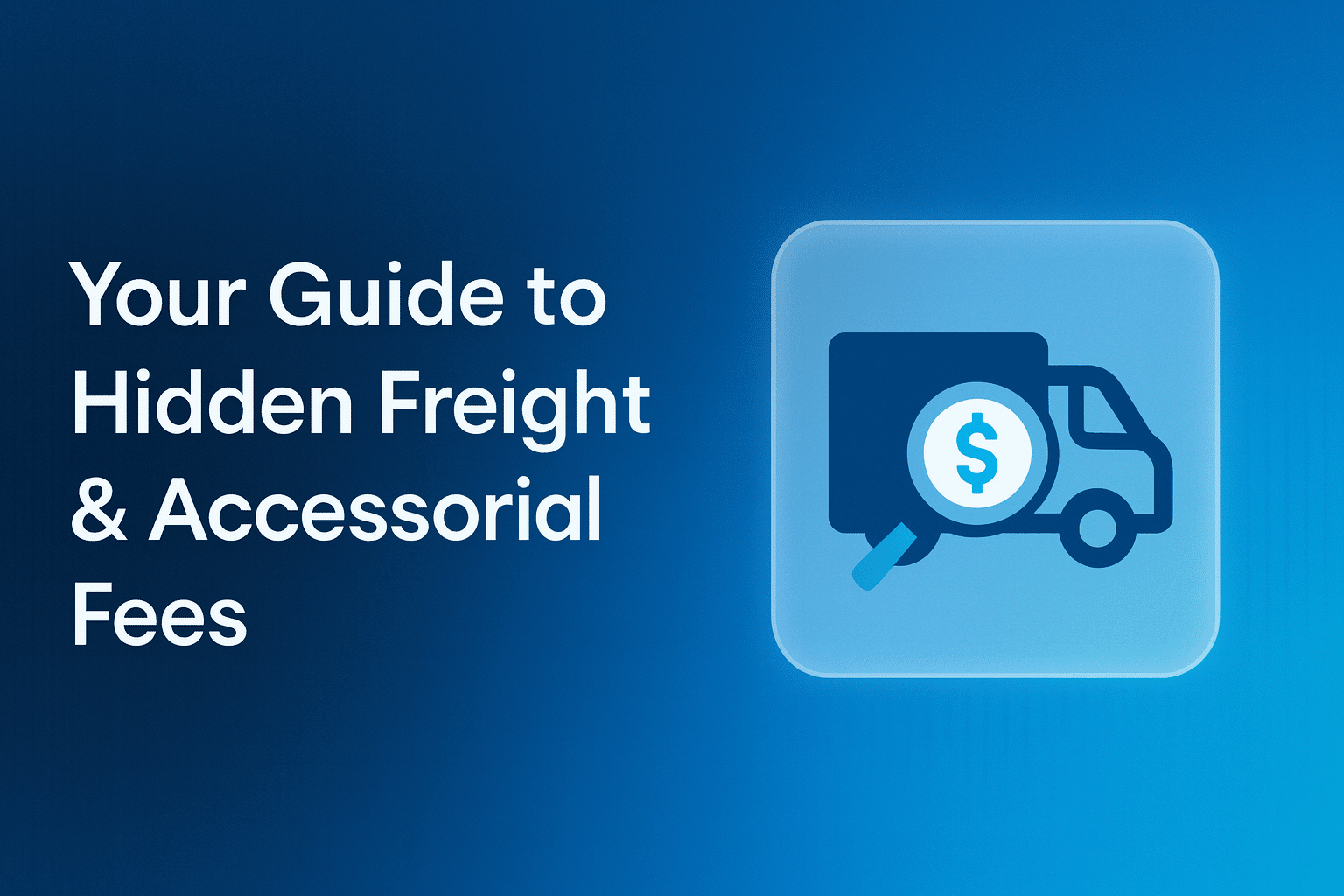Choosing the right shipping method—parcel vs freight shipping—is a critical decision in any supply chain. The choice comes down to the size, weight, and quantity of your goods. Parcel shipping is for small, individual packages under 150 lbs that are handled by parcel carriers like UPS and FedEx. Freight shipping is for larger, heavier, or bulk freight shipments, often on pallets, and is divided into Less-Than-Truckload (LTL) for partial loads and Full Truckload (FTL) for an entire truck.
When to Use Parcel
Parcel shipping is your go-to for smaller shipments that can be processed through automated systems. It’s the standard for e-commerce retailers and businesses sending individual items directly to consumers, with various parcel services designed to optimize the shipping process and enhance customer satisfaction.
Choose Parcel for:
- Items under the limits: Your parcel packages must be under 150 lbs, no more than 108 inches long, and under 165 inches in length + girth combined. These are typical weight limits for small packages.
- Small to medium shipments: Ideal for businesses shipping lower quantities directly to different locations.
- Time-sensitive deliveries: A variety of parcel shipping services are available, including standard ground shipping and faster air shipping, to meet different needs for delivery speed.
- Detailed tracking: Customers expect the granular, real-time tracking capabilities that are standard with parcel services.
When to Use Freight (LTL vs FTL)
When shipments become too large for parcel networks, freight shipping offers the scale and cost efficiency needed for bulk transport. It’s built for moving large quantities of goods between businesses, distribution centers, and manufacturing plants. A dedicated freight carrier will manage these freight packages.
Choose Freight for:
- Heavy or bulky items: Anything over 150 lbs or exceeding parcel dimension limits is considered freight. This includes oversized items.
- Palletized goods: If your items are stacked and wrapped on pallets for stability and ease of handling.
- High-volume shipments: Sending multiple shipments to the same destination is far more cost effective via a single freight service.
LTL vs. FTL: Which one do you need?
- Less-Than-Truckload (LTL): Use LTL shipping when your shipment is too big for parcel but too small to fill a whole truck (typically 1–14 pallets). This method allows you to share space and costs with other shippers on a single truck.
- Full Truckload (FTL): Use FTL for large, single consignments that fill an entire truck. A standard 53-ft dry van payload is typically around 42,000–45,000 lbs (within the 80,000 lb GVW limit). FTL is also ideal for high-value or time sensitive shipments, as the truck goes directly to the destination with no intermediate stops, reducing potential delivery delays.
Parcel vs Freight at a Glance
| Feature | Parcel Shipping | Freight Shipping |
| Typical Weight Limit | Up to 150 lbs per package. | 150 lbs to over 45,000 lbs. |
| Size Limits | ≤108″ in length and ≤165″ in length + girth. | Palletized, crated, or oversized items. |
| Best Use-Cases | Individual boxes, e-commerce orders, documents. | Bulk goods, heavy machinery, large-volume B2B. |
| Handling | High-touch; moves through multiple automated sort hubs. | Fewer checkpoints, especially for FTL. |
| 2025 Pricing Context | ~5.9% General Rate Increases (GRIs) plus seasonal Demand Surcharges. | Based on freight class, density, distance, and market capacity. |
| Common Modes | Ground vans, cargo planes. | Trucks (LTL/FTL), trains, ships, planes. |
| Tracking | Detailed, step-by-step tracking is standard. | Varies; FTL is direct, LTL has hub scans. |
Costs in 2025: GRIs, Surcharges & DIM Weight
Understanding the drivers of transportation costs for both parcel and freight is crucial for budgeting. In 2025, several key factors affect the total cost.
Detailed Cost Comparison (2025)
| Cost Component | Parcel Shipping | Freight Shipping |
| Base Rate | Zone & Weight Based | Per 100 lbs (CWT) based on Freight Class & Lane |
| Annual Increase | ~5.9% General Rate Increase (GRI) | Varies by carrier and contract; influenced by market capacity |
| Variable Surcharges | Seasonal Demand Surcharges | Weekly Fuel Surcharge (FSC) |
| Size-Based Fees | Dimensional (DIM) Weight charges | Based on Density (part of Freight Class) |
| Handling Fees | Additional Handling, Large Package, Over-Max | N/A (built into class) |
| Common Accessorials | Residential Delivery, Signature Required | Liftgate Service, Residential Delivery, Appointment Fees |
Parcel Cost Factors
- 2025 General Rate Increases (GRIs): Both UPS and FedEx announced average GRIs of ~5.9% for 2025. The real impact will vary based on your specific shipping profile (service, zone, weight, size).
- Demand Surcharges: These are seasonal fees applied during peak shipping times. Multiple carriers now publish annual calendars for these surcharges.
- Dimensional (DIM) Weight: Carriers charge based on whichever is greater: the actual weight of the package or its calculated DIM weight. Lighter shipments with large dimensions can incur significant costs.
- Accessorial Fees: Common add-ons include charges for residential delivery, signature requirements, and extra fees for packages requiring Additional Handling or classified as a Large Package or Over-Maximum.
Freight Cost Factors
- Freight Class: The freight classification (NMFC) system is a primary factor in determining freight shipping costs. Note: A significant NMFTA update on July 19, 2025, shifted many items toward density-based classes. Always verify specs on your Bill of Lading (BOL) to avoid reclassification fees.
- Distance and Lane: The origin, destination, and popularity of the shipping lane affect the price.
- Weight and Density: Heavier and denser shipments generally have a lower cost per pound.
- Accessorials: Common extra charges include liftgate service, residential delivery, and appointment fees.
Parcel vs. Freight Checklist
Use this checklist to quickly determine the best of your shipping options for a given shipment.
- Total Weight: Is any single piece over 150 lbs? If yes → Freight.
- Largest Side Length: Is the longest side over 108 inches? If yes → Freight.
- Length + Girth: Is (2xW + 2xH + L) over 165 inches? If yes → Freight.
- Stackability: Is the shipment palletized or does it need to be? If yes → Freight.
- Delivery Type: Does it require special handling like a liftgate service at a residence? If yes → Freight (LTL).
- Transit Deadline: Is it one of your time sensitive shipments? → Freight (FTL).
- Budget Sensitivity: Can you absorb potential parcel surcharges (Demand, DIM, Large Package)? If not, and you have multiple boxes to one location, compare against → Freight (LTL).
- Damage Risk: Are the items fragile or prone to damage? Palletizing for Freight can often reduce damage risk compared to individual parcel handling.
FAQ: Parcel vs Freight
What’s the difference between parcel and freight weight limits?
The general weight limit for a single parcel is 150 lbs. Anything heavier must be shipped via freight, where shipments typically weigh hundreds or thousands of pounds.
Does Parcel have a size limit besides 108 inches?
Yes. In addition to being no more than 108 inches in length, parcels cannot exceed a combined length and girth of 165 inches.
When is LTL cheaper than parcel for multiple boxes?
LTL shipments often become cheaper than sending multiple shipments via individual small parcel shipments once your total weight exceeds 200-500 lbs going to the same destination. It’s best to get a quote for both to compare.
What fees affect parcel costs in 2025?
The main costs are the base rate, the ~5.9% General Rate Increase (GRI), seasonal Demand Surcharges, dimensional (DIM) weight charges, and accessorial fees for services like residential delivery or for oversized packages.
How do damage rates compare between parcel and palletized freight?
Properly palletized and wrapped freight generally has a lower damage rate because it has fewer handling points than an individual parcel, which moves through multiple automated sorting hubs.
What’s the typical payload for a full truckload?
A standard 53-foot dry van can legally carry a payload of about 42,000–45,000 pounds, staying within the 80,000-pound gross vehicle weight limit.
What documents do I need for freight?
The most important document is the Bill of Lading (BOL). The BOL acts as a receipt, a title, and a contract for the shipment.





